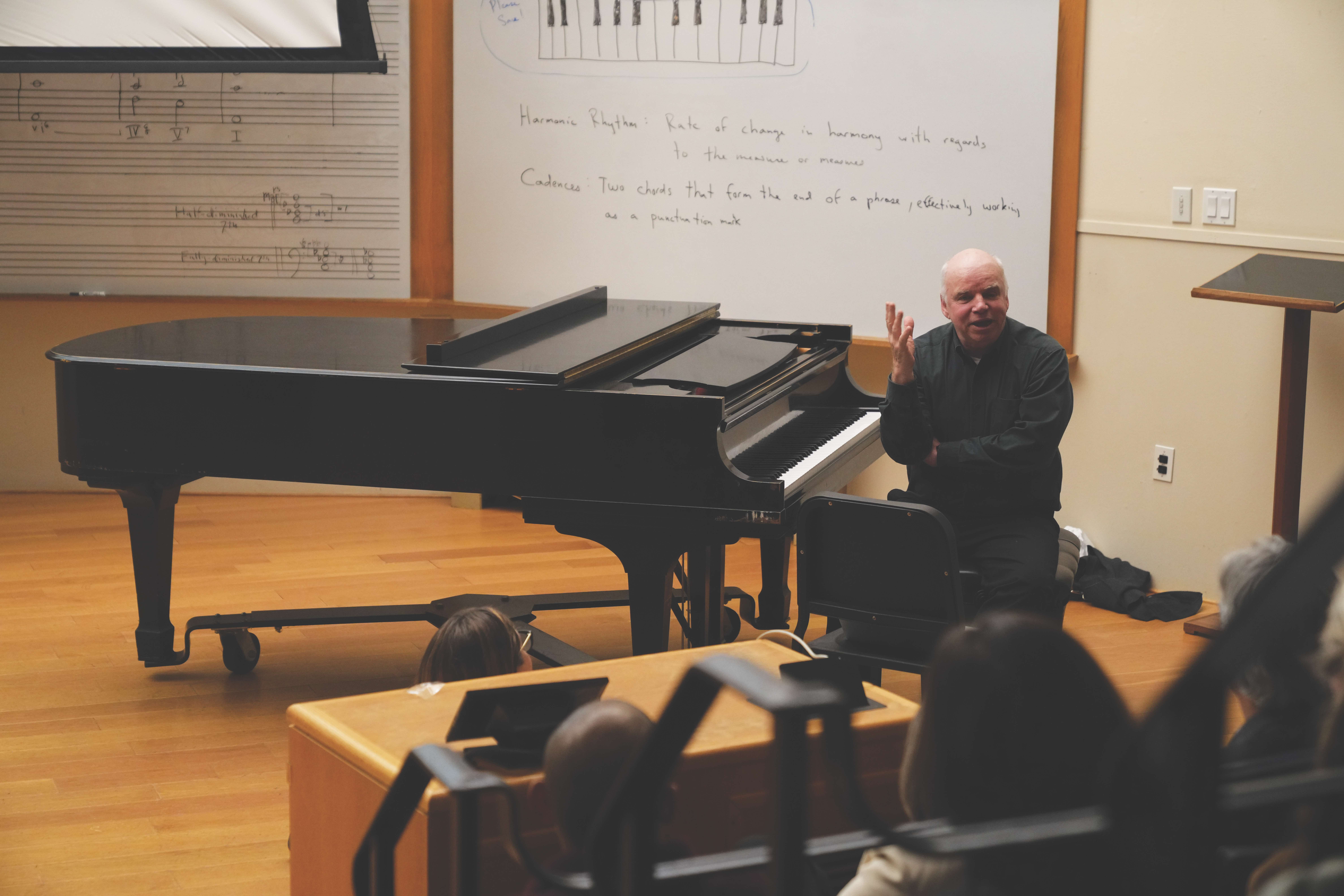Silent film screening of “The Seventh Day” features Grammy Award-winning pianist
April 21, 2023
 Eliza Rhee
Eliza RheeThough the audience was familiar with the scenery of coastal Maine projected on screen, the black-and-white film, lack of dialogue and live piano music immersed the audience in a pastime seldom experienced since the early 20th century.
Last night, “The Seventh Day”—a rare silent film featuring tensions between visiting New York City aristocrats and New England locals—was screened in Gibson Hall by the Cinema Studies Program in conjunction with the Music Department and Lectures and Concerts.
“The Seventh Day” was shot in New Harbor, Maine, when filmmaking was moving away from the regional film hubs of the East Coast to Hollywood. Few Hollywood movies from this period were shot on location, so shooting “The Seventh Day” in Maine provided a distinctively authentic landscape, enhancing the film’s importance to Maine’s cultural history.
“It is history just as much as the important political events in history, and I think film is cultural history. This specific film we’re watching, ‘The Seventh Day,’ has this tension between the rural and the city, which we see in so many silent films,” Visiting Assistant Professor of Cinema Studies Tanya Goldman said.
“The Seventh Day” offers a glimpse of the issues Mainers faced in the 1920s, particularly the tensions between wealthy vacationers and a local community, a strained relationship that continues to this day.
“That idea of these tensions of the vacation versus the local communities … is something that culturally we’re also all really thinking about now because we have growing inequality,” Goldman said.
For decades, “The Seventh Day” was thought to be lost. However, after the collapse of the Soviet Union, archivists recovered a print of the film in Czechoslovakia. The film is now co-owned by the Museum of Modern Art in New York City and Northeast Historic Film in Bucksport, Maine, the latter digitizing the film in its mission to preserve Northern New England’s films.
Not only are the themes of films like “The Seventh Day” important to understanding Maine in the 1920s, but the experience of seeing a silent film is also key to understanding the era. Though moving pictures without synchronized sound are called silent films, in the early 20th century, silent films were anything but silent.
“The term itself is sort of a misnomer.” Goldman said. “Even though the film is silent, it wasn’t experienced in silence.”
Before synchronized sound was introduced to films in 1927, films were shown with a live accompaniment, ranging from a full orchestra in large cities to the local pianist in smaller towns. Though live music was common for filmgoers of the early 20th century, it is a unique experience for people today.
“I thought it was fascinating seeing how it would have been done back 100 years ago,” attendee Henry Penfold ’26 said.
Last night’s accompaniment was performed by Grammy Award-winning pianist and composer Paul Sullivan. Sullivan improvised the majority of the music, relying on the pictures in front of him to inform his musical storytelling.
“I do have a few songs prepared for certain moments … that need to be reflected in the music—people tripping, or getting a pie thrown in their face—stuff like that,” Sullivan wrote in an email to the Orient. “But other than that, I’m just sort of ‘In The Zone,’ and letting my fingers respond to what my eyes are seeing.”
Live music no longer accompanies movies today, but the legacy of silent film continues to wow audiences and is crucial to understanding how the world worked just a century ago.
“Watching a silent film with a live accompanist is a very rare occurrence in most people’s lives, and, as an artistic event, that combination can be unique and very, very interesting to witness and experience,” Sullivan wrote. “It’s a rare and powerful medium.”

Comments
Before submitting a comment, please review our comment policy. Some key points from the policy: